 |
||||||||||||||||||||||||
 |
 |
|||||||||||||||||||||||
 |
||||||||||||||||||||||||
 |
 |
 |
 |
|||||||||||||||||||||
| 2015 CIRCLES | 2014 CIRCLES | 2013 CIRCLES | 2012 CIRCLES | |||||||||||||||||||||
|
||||||||||||||||||||||||
 |
 |
|||||||||||||||||||||||

|
Ground Report – Marden, Wiltshire, 10/08/05It is difficult to know where to start with this formation. Simple yet beautiful as the overall design is from above, it is on the ground where the stunning and amazing complexity of this crop circle becomes apparent. 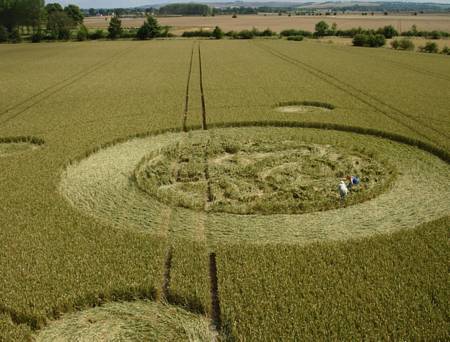
Even though the field is virtually surrounded by roads, one of them fairly busy, the formation itself cannot be seen apart from the very hint of a shadow if you are looking really hard! It is often the case that this phenomenon is somehow able to find a secluded spot in a location which is not secluded. The field, however, is relatively easy to locate as it must be just about the only green wheat field left in Wiltshire. The general design is a classic ‘quintuplet’ comprising a central circle, surrounded by four smaller satellite circles which are connected by a narrow laid ring. There is also another large narrow ring surrounding the rest of the design. Each of these rings measures around 1ft in width. 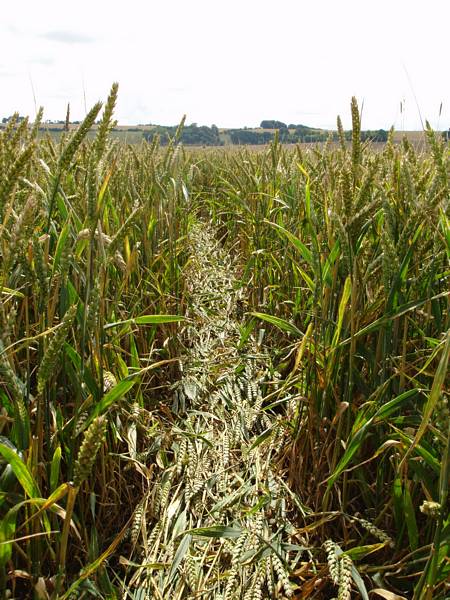
The central circle is separated into an outer ring and an inner circle by a very narrow ‘curtain’ of standing crop. The crop in the outer ring of the central circle, which measures a little over 15ft on average, is all laid clockwise and is laid fairly flat to the ground. 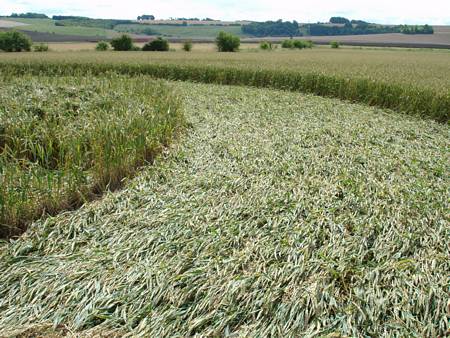
The crop in the four satellite circles, which measure 22ft in diameter, is laid in two sections. There is an anti-clockwise flow about 3ft wide running round the outside of each circle, while the crop in the centre flows clockwise. At the centre are some lovely standing tufts. 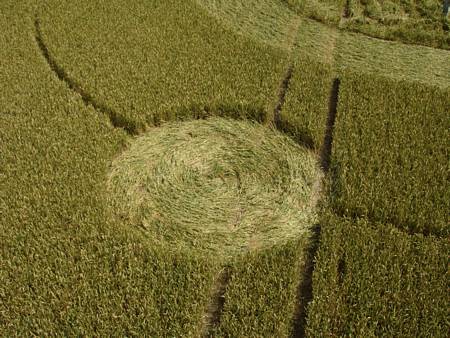
Where the crop flows in opposing directions it is a little messy in places but generally fairly neat. It is in the central circle where the formation gets really interesting! I have never seen anything like the complexity, the range of features or the intricacy of the laid, woven, nested, swirled or ‘knotted’ crop inside this circle. Everywhere I looked there was something new and the closer I looked the more amazed I became. 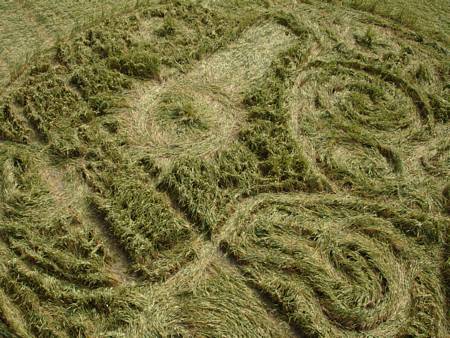
Although there are distinct shapes and patterns within the design which can be seen from above (as in the previous image), it is when you look closely that you realise how awesome some of the elements which make up this bizarre pattern really are. 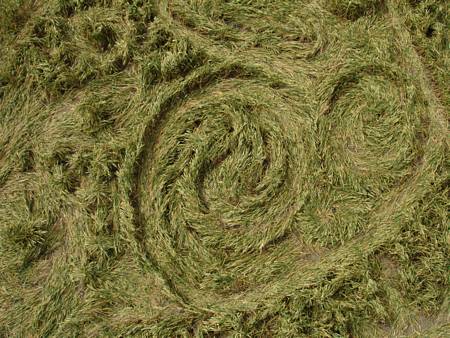
I cannot accurately describe the pattern and I could not hope to cover in detail all of the elements I saw inside this central circle, so I will provide images and descriptions of some of the more interesting and exciting areas. NestsThroughout the central circle there are many examples of the ‘nested’ centres we have seen in many crop circles including some from this year. These, however, are not in the centre, but all over the place! The crop is tightly woven, sometimes around standing stems in the centre, sometimes around a bare patch of ground. In most cases the nests are raised many inches off the ground. 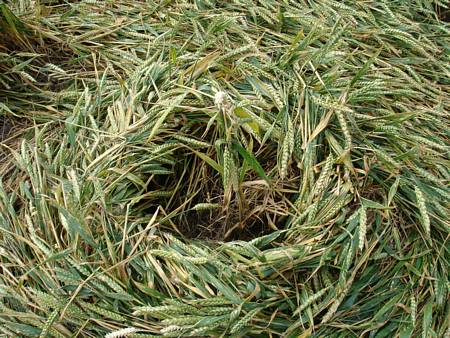
SpiralsSome of the more visible parts of the pattern are made up of raised spirals and other shapes. Here the crop has been tightly twisted around itself and is quite solid to touch. It is raised off the ground and then flows around to form the shapes visible from the aerial photos. 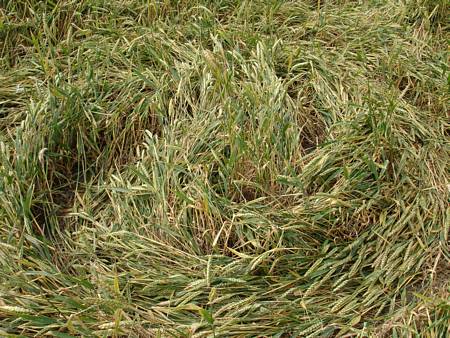
SwirlsThere are two distinct ‘central’ swirls, although again they are not positioned at the centre. Once again these are like nothing I have seen before! Instead of the crop flowing round and then up into a tuft, or out in a ‘splayed’ fashion, it actually flows towards the centre from a few feet away, then around and up to form stunning peaks. There is so much crop inside that each one is raised more than 1ft from the ground, and at the top, the stems spill out beautifully. 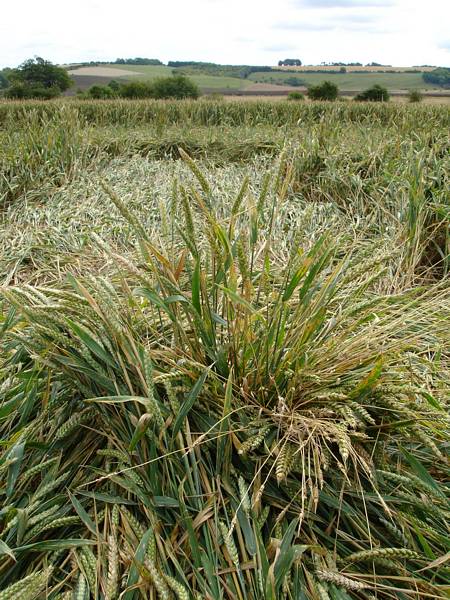
PathsIn between some of the features I have already mentioned, there are narrow laid pathways of crop. These are often defined by twisted crop on each side like the curb on a road. Within the paths the crop is laid flatter than anywhere else in the central circle. 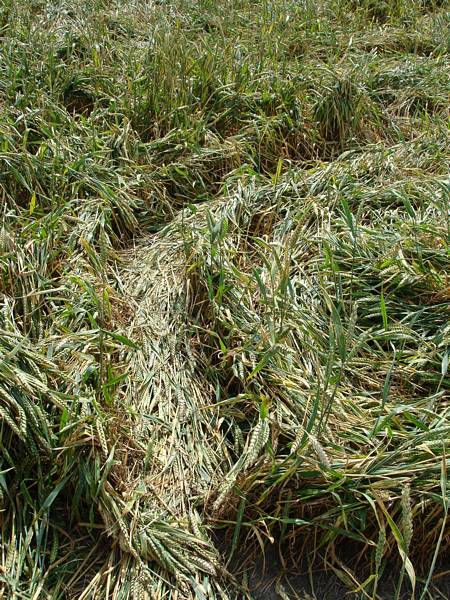
KnotsThis is a rather crude description but I can think of no other way to describe them. The crop has been twisted around, back on itself and often is tucked back underneath the stems at the base. There are many of these ‘knots’, sometimes apparently arranged in a discernable pattern, sometimes not. The image below shows the way the crop is twisted from above. 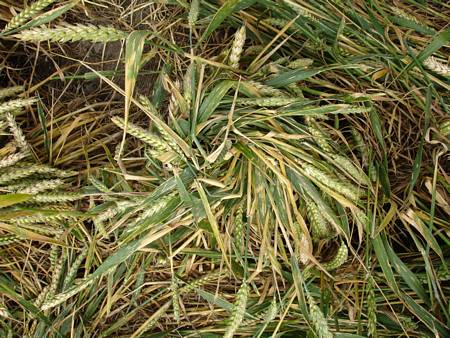
Standing TuftsThere are many standing tufts in which the crop is bent about half way up the stem, and is then ‘folded’ inwards towards the centre. Sometimes it is bent right over so that the seed heads are ‘inside’ the standing crop, while sometimes the stems are bent horizontally so that they form a flat ‘top’ to the tuft. 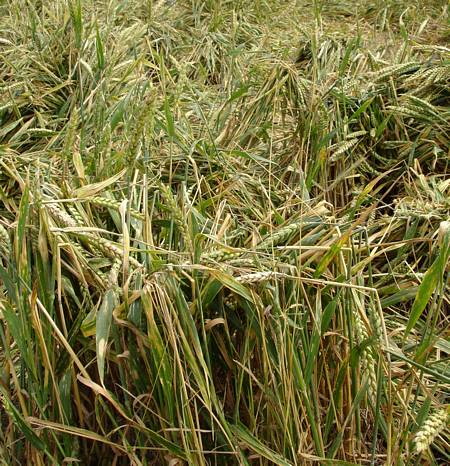
TunnelsAlong with the swirls, these for me are the most impressive aspect of this formation. The crop has apparently been twisted and then folded or bent over to form a sort of archway. The reason I describe them as tunnels is that in many places there are lots of them in succession, and underneath the arches flows the rest of the crop from either side. Sometimes all in the same direction, but sometimes from both sides meeting in the middle, impossible to see! 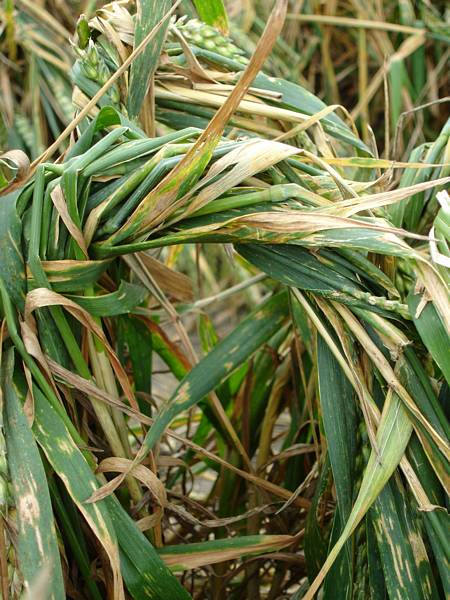
The image above shows one of the arches in detail, the image below shows some of the laid crop flowing underneath the ‘tunnel’. Stunning. 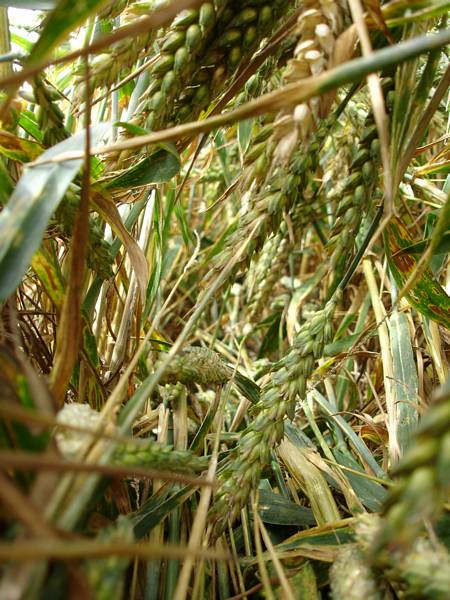
The condition of the crop inside this formation was generally good. In many places the stems seemed undamaged, in other areas there was evidence of some kinking and damage, but with such tightly woven crop that is to be expected. I was so excited by everything I saw that it became slightly insignificant! This really is a fascinating crop circle. There is so much to it I could write or talk all day and not have time to describe it all. I am sure the longer anyone spends inside, the more ‘treasures’ they will find. I know that could be said of many formations but this is particularly full of them. I feel very lucky to have been able to visit this awe-inspiring crop circle only a day after its appearance. This is what it’s all about! 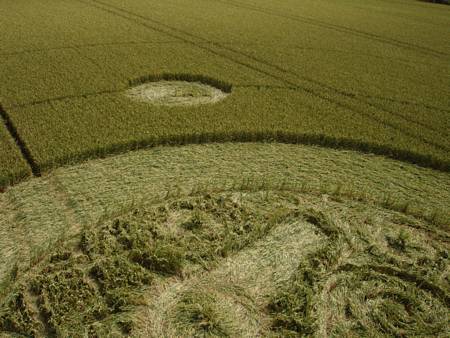
Crop Circle Summary
Alternative Websites |

